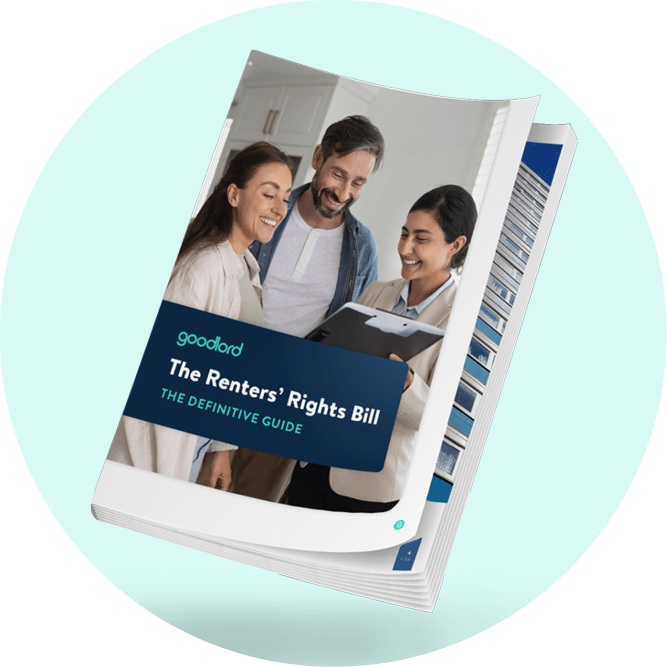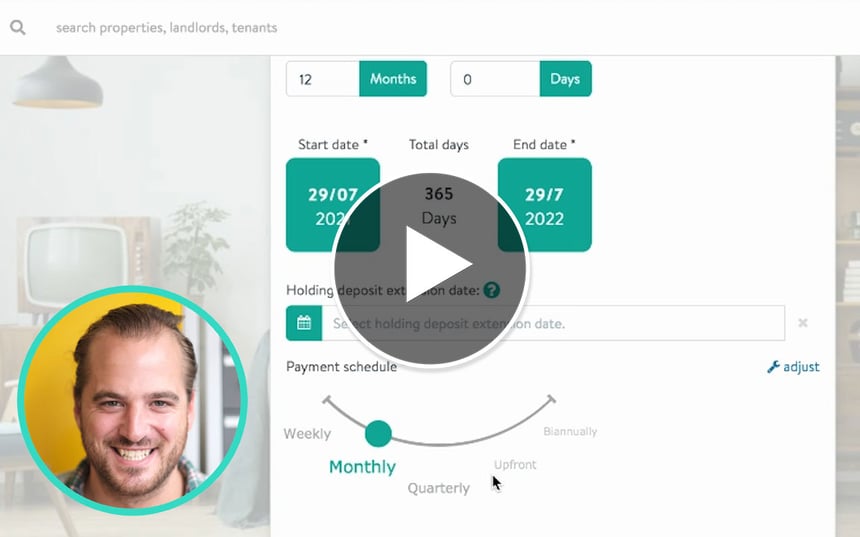Understanding the Private Rented Sector Database
Discover what the new Private Rented Sector (PRS) Database means for landlords and letting agents. Learn about compliance, penalties, and how to prepare.
Slowly but surely, the Private Rented Sector (PRS) is professionalising. The Renters’ Rights Act (RRA) is a massive part of that, with the legislation set to give the PRS its biggest shake-up in almost four decades. This wave of change will have a major effect on how landlords operate.
The PRS Database is one key part of these wider reforms. This database will collect information on every landlord in the country and publicly list them.
The government is implementing this measure to hold landlords accountable and provide them with a portal to check their compliance. Once it comes into effect, every landlord will be required by law to register themselves and their rental properties in the database.
Non-compliant landlords may be saddled with financial penalties of £7,000 for the first civil penalty, with costs spiralling to £40,000 for repeated breaches. Agents who advertise or let a property belonging to an unregistered landlord can face similar civil penalties of up to £7,000, escalating to £40,000 and possible criminal prosecution for serious violations.
One of the ways the government plans to enforce compliance is by linking possession to an active registration. This means landlords won’t be able to claim possession until they’re listed alongside their properties.
This database offers agents an opportunity to support their landlords with compliance. Ensuring your landlords are registered will also save you a legal headache.
Once the Renters' Rights Act is implemented, the government will be able to pass secondary legislation to launch the database. Preparing your agency and landlords now will ensure everyone remains compliant in the long run.
In this article, we’re going to explore what we know about the database.
- What is the PRS database?
- Why is the government introducing the database?
- How will the database work?
- What does the database mean for letting agents?
- Conclusion
What is the PRS database?
In simple terms, the PRS database will be a one-stop “property portal” listing landlord data, enabling them to demonstrate their compliant properties and understand their requirements.
It’s important to note that Matthew Pennycook, the Minister of State for Housing and Planning, has said that the PRS database will not replace current selective licensing schemes. Pennycook has said that, “Selective licensing is a valuable tool enabling local authorities to drive better outcomes for local residents, tenants, and responsible landlords.
“The database is not designed to replace selective licensing. Selective licensing schemes aim to target specific local issues by enabling more intensive proactive enforcement strategies.
“We will continue to review the use of selective licensing as we develop the Private Rented Sector Database and will look to refine the way the two systems work together, including through sharing data.”
What kind of information will be collected?
As of yet, there are no clear answers regarding what information the database will actually collect. We can assume that the database will collect detailed information about landlords and their properties. The government is also exploring collecting the following pieces of data:
- Possession information (Section 8s)
- Information on tenancy disputes
- Rent Levels
- Categorisation suitable for disabilities
The National Residential Landlords Association (NRLA) has called for the digitisation of important electricity and gas safety certificates. It argues that property details ensure peace of mind for tenants looking to rent compliant properties.
Whatever information is collected, there are two key pieces of data that we believe should be included:
- Unique Property Reference Numbers (UPRNs) - These numbers will be given to every property featured on the database. They’re essential for promoting transparency and ensuring data accuracy.
- Duplication checks - If a landlord can add themselves to the database multiple times, the entire process could be susceptible to abuse.
Who will have access to the PRS database?
Much like HMRC’s Companies House, the PRS Database will be a public register. This means that the majority of the information stored in the database will be accessible to the general public. We do not currently know exactly which landlord documents will be kept private and which will be publicly available.
Are there any privacy concerns?
During consultations, landlords raised privacy concerns. They argue that the landlord database will contain too much personal data for a public registry.
While some landlords may have valid concerns about who will have access to their data, we should remember that more transparency in the sector is generally a good thing. Transparency is a natural outcome of the industry professionalising. It will empower tenants, encourage landlords to be accountable, and give letting agents the opportunity to support their clients further and ensure compliance.
Why is the government introducing the database?
The database, much like the Renters’ Rights Act itself, is being introduced to empower tenants and improve standards among landlords and across the PRS. While most landlords provide a good home to their tenants, the government is at pains to tell us that lowest quality housing stock is found in the PRS. A database will help to maintain standards.
The information available on the database will allow prospective tenants to make informed decisions about whom they choose to rent from.
There are, of course, well-meaning accidental landlords and landlords who self-manage their properties. These good actors could get caught out if they aren’t aware of the new legislation.
Local councils will also benefit from the database. With the right information, councils will be significantly strengthened and able to take action against landlords who persist in dodging compliance processes.
That isn’t to say that landlords won’t benefit from the database. The government views the database as a potential compliance portal. Residential landlords will better understand their responsibilities and ensure their properties meet the new requirements of the UK rental market.
How will the database work?
As mentioned above, the landlord database is expected to operate in much the same way as the HMRC Companies House. Landlords will be required to fill out the registration requirements to list themselves and the properties they rent out on the database. The general public will then be able to search the database for information about specific properties or landlords.
The government has told the Lords’ Committee that if a landlord is unable to register themselves on the database, their letting agents will be able to complete the required information on their behalf.
For the many landlords who rely on letting agents to manage their properties, allowing agents to upload information on their behalf is a proportionate approach.
They intend to allow agents to submit information to the database on behalf of landlords and will be exploring through secondary legislation what that might look like in practice and what capabilities they will need to build.
Ideally, the industry would like to see landlords given a unique register number, and each property uploaded to the database assigned a Unique Property Reference Number (UPRN). This will help identify landlords within the system and ensure their properties are listed correctly.
Without registering on the database, it will be illegal for landlords and agents to advertise a property for rent.
There are many considerations when building databases, such as how it will handle if a property is already listed and someone else tries to register for it, how it will prove the identity and ownership of the user registering the property, and how it will handle duplicate landlord accounts.
What happens to landlords who don’t join the database?
For the first civil penalty, landlords will be fined £7,000. For severe or repeated compliance failures, this fine can grow to up to £40,000. It’s unclear at this point if the fine will be per property or cover the landlord’s entire portfolio.
Additionally, providing false or misleading information to the registry will be designated a criminal offence. This could result in rent repayment orders and potentially lead to further prosecution.
Landlords who fail to register their properties or let the registration lapse will also be unable to regain possession. This means that non-compliant landlords will not be able to carry out eviction proceedings against their tenants. The only exception to this will be in the case of anti-social behaviour on the part of the tenant, where the neighbours might suffer.
Will there be any registration fees?
Yes, there will be a registration fee for landlords to list themselves and their properties on the database. The government has said that this fee will be used to fund the database and will be proportional and reasonable.
What does the database mean for letting agents?
According to the 2024 private landlord survey, 52% of landlords manage their properties independently without the assistance of a lettings agency. The PRS database, along with the Renters' Rights Act, will make it more challenging to do this while staying compliant.
The government has said that agents may be allowed to upload information to the register on behalf of their clients. This presents an opportunity for letting agents to act as a source of truth for their landlords and ensure that they’re compliant with the law.
If the database is implemented correctly and becomes the portal the government wants it to be, it will be an invaluable resource for agents.
How to prepare for the register
- Keep clients informed - Your landlords will have to register with the database. Ensure that you tell them of the necessary information and any deadlines they must meet. Scotland and Wales have already been through this process. It’s a good idea to reach out to these peers and see how their agencies handled it.
- Expand your services - Since agents may be able to upload information on behalf of their landlords, ensure your clients are aware that you can assist them in staying compliant.
- Stay informed - While the specifics of legislation implementation are being hammered out, stay on top of the news and make sure you’re ready. Remember, things can change in an instant!
Conclusion
Responsible landlords who meet their obligations have nothing to fear from the PRS database. This register will introduce an additional level of transparency to the lettings industry, empowering tenants to make informed decisions about their housing.
Professional landlords make for excellent clients. Letting agents who work with their landlords as a knowledgeable source of information will be able to build stronger, more reliable professional relationships.
This blog is intended as a guide, and the information contained therein is subject to change. For more information, visit the MHCLG website.










